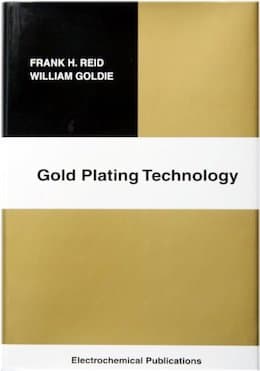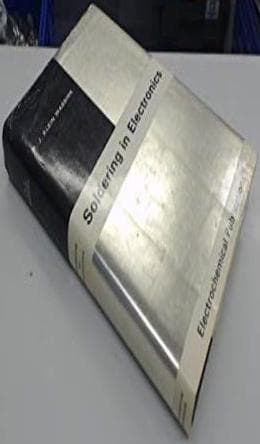
-----
Tin-Lead Plated Over Gold
2000
Hi-
Plating tin-lead over gold is a no-no as I recall. Can anyone give me the specifics as to why or what happens if you do?
Thanks - JDK
J D Kronicz- Harrisburg, Pennsylvania, USA
2000
The obvious first question is why would you want to do that? >From my experience in electronics, I've always stripped Sn/Pb prior to Ni/Au plate; if the solder wasn't completely stripped, the Ni peeled. You can dissolve Au into solder, reducing solderability and/or have reflow problems.

James Totter, CEF
- Tallahassee, Florida
by Reid & Goldie
-- hard to find & expensive; if you see a copy cheap, act fast!

on eBay or Amazon
or AbeBooks
(affil link)
Thanks for your comment. It wasn't done on purpose. We generally try to keep the too from overlapping. We did plate some product recently were the gold plate overlapped the tin lead and a week or so later the tin lead was noticed to be brittle in that area. I was really curious whether this was a result of the two overlapping. Do the gold and tin lead form a brittle intermetallic?
J D Kronicz- Harrisburg, Pennsylvania, USA
2000
2000
During the soldering process the gold (Au) plating is dissolved in the molten solder exposing the underlying plating. The Au plating is a protective coating to prevent the underlying plating from oxidizing until the soldering process can be performed. In general a thin Au coatings of up .000050" thick will completely dissolve into the molten solder with no detrimental affect of the solder joint. Au coatings over .000050" will cause an AuS4 intermetallic layer causing weak and brittle solder joint. The strength of this AuSn4 is layer is even weaker when the Au deposit is an alloyed Au deposit as in a cobalt hard gold deposit. Soldering on AuCo deposit will produce a dull gritty appearance of the reflowed solder. Two great books to get are:
GOLD PLATING TECHNOLOGY by Frank H. Reid & William Goldie.
(Read chapter 19) &
SOLDERING IN ELECTRONICS by R.J. Klein Wassink..
- Cheshire, Connecticut
Q, A, or Comment on THIS thread -or- Start a NEW Thread
